Just how dry have the ground conditions been? Dire. Fire sweeping towns from Austin to Los Angeles, dire. Rain? Forecast yes, but closer to the Powell Line. The Powell Line, as stated previously is where the dry plains and the wet prairie meet. An abundance and a desert. Too much and not enough. Floods and fire. We finally got rain today. Much needed as we have pumped 20,000 gallons and then some per month out of the aquifer supplying Dallas, Bryan, College Station and San Antonio with water. Austin as well as a multitude of other communities along the way. California is an example we must follow and the amount of mulch we have spread to keep the ground moist measures in the tens of tonnes this season, and we need more. A lot more. California more.
Topics:
Michael Smith considers the following as important: agriculture, climate change, drought, Featured Stories, Hot Topics
This could be interesting, too:
NewDealdemocrat writes JOLTS revisions from Yesterday’s Report
Joel Eissenberg writes No Invading Allies Act
Ken Melvin writes A Developed Taste
Joel Eissenberg writes How Tesla makes money
Just how dry have the ground conditions been? Dire. Fire sweeping towns from Austin to Los Angeles, dire. Rain? Forecast yes, but closer to the Powell Line. The Powell Line, as stated previously is where the dry plains and the wet prairie meet. An abundance and a desert. Too much and not enough. Floods and fire.
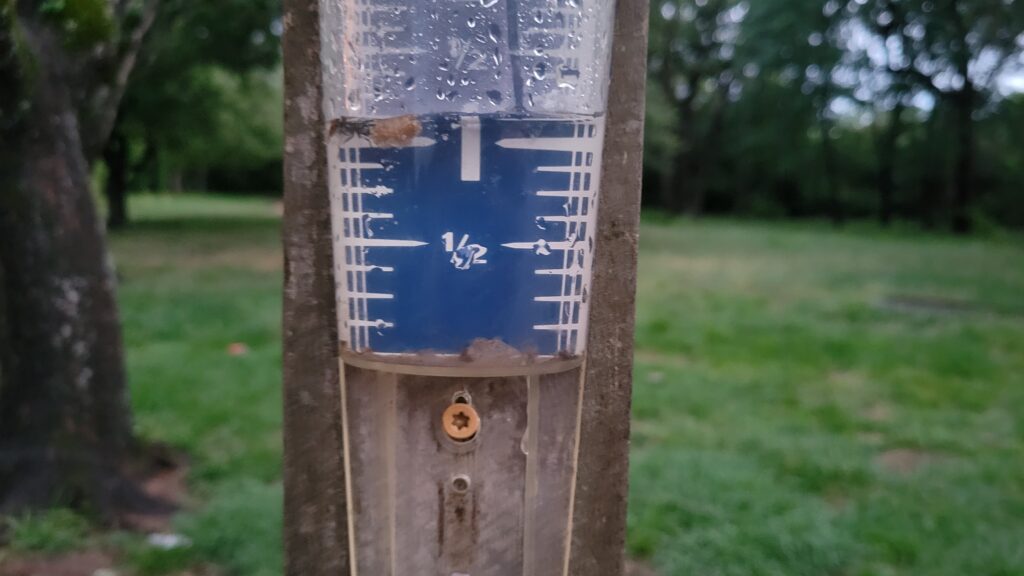
We finally got rain today. Much needed as we have pumped 20,000 gallons and then some per month out of the aquifer supplying Dallas, Bryan, College Station and San Antonio with water. Austin as well as a multitude of other communities along the way. California is an example we must follow and the amount of mulch we have spread to keep the ground moist measures in the tens of tonnes this season, and we need more. A lot more. California more.
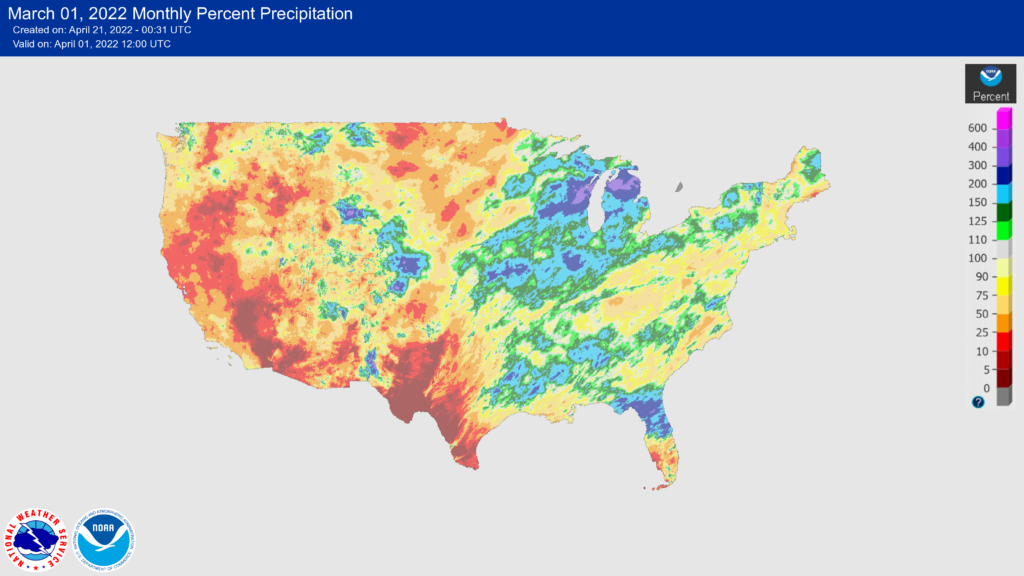
As of March, the United States start here. A wicked assault of lack of rainfall that is plaguing the western US, Central, South-West, and even parts of the North-East as the departures from the norm dry out the nation. Much of this is typical for an La Nina year. However this has been exacerbated by climate change, and as such exponentially worse than normal. The story of the Lost Pines of the Two Brothers was almost lost in Texas in 2011, where the pine forest outside of Bastrop was almost lost. Huge swaths of land burned uncontrollably close to Houston and Austin. Much closer to communities such as mine and others close by.
Parts of the country are at record deficits. We received an inch and a quarter today, but our eight and then some inches for the year are far beyond the normal fourteen or more at this point in the year. We are usually at 40 inches per year, and most delivered in Central Texas between February and May, and then again September/October to November/December. This makes the honest case for a two grow season farming economy, spring and fall. We always asterisk the fall because Hurricane Season is a huge variable on the Gulf Coast. Spring brings us 20 inches or so, fall can be either a lamb or a bear.
Just how bad is it? Let’s look at the accumulation data from a few agriculturally important spots around the country. We start with our farm, where we started this morning below. Well below. We keep on farm data from two gauges and are close to this, but this shows how hit or miss things have been this year, so far:
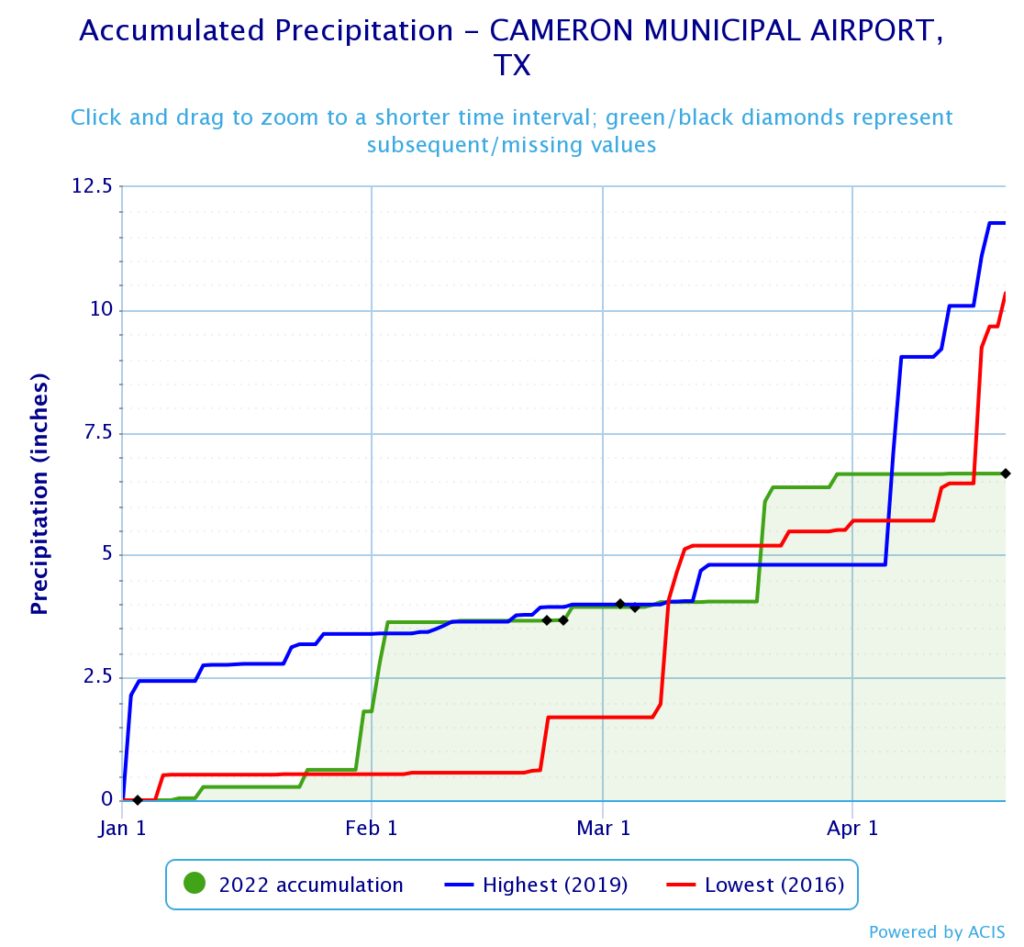
Let’s get out of Texas for a bit. We know West and North Texas are a mess. Around the nation we are seeing accumulations that are alarming. Kansas has been hit hard, for starters, as one of the worst examples:

Well below anything seen recently. Nebraska hasn’t fared much better. These two are the Midwest Corn Belt, and play an important role in ag, ethanol, and general sentiment in the market.
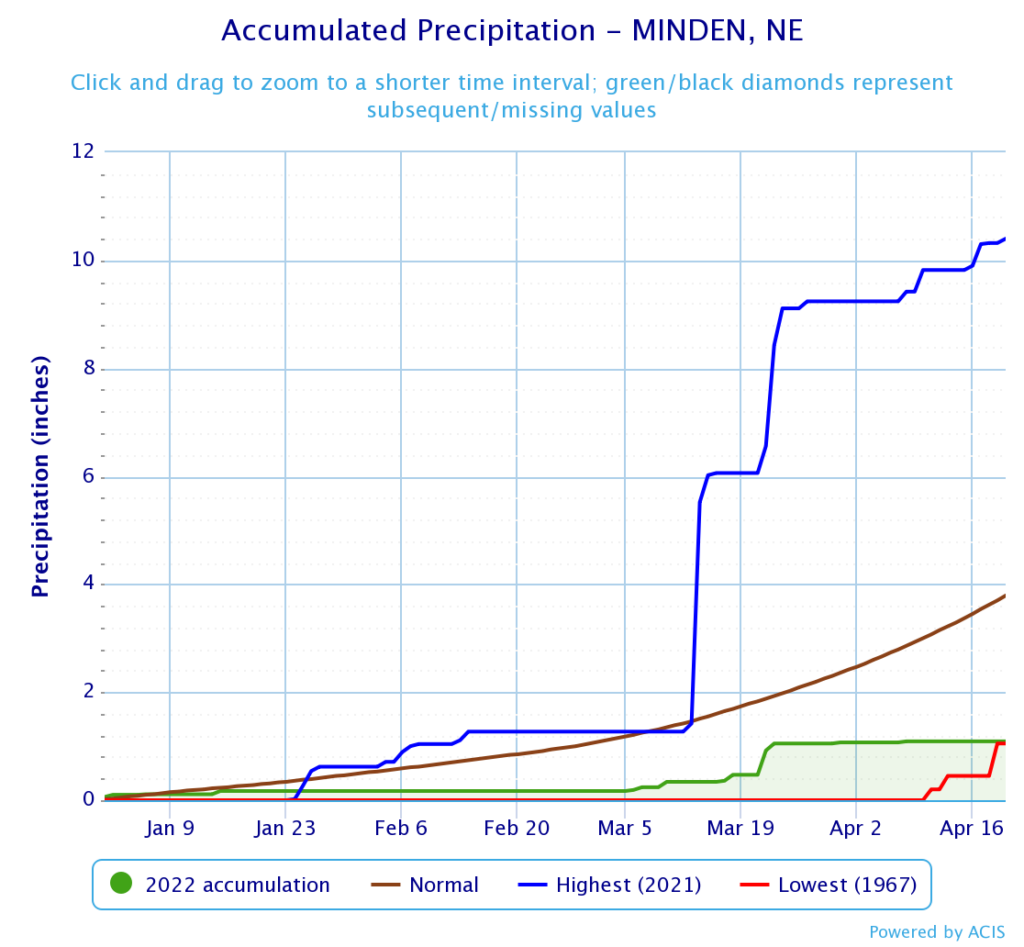
Let’s branch out a bit. North Texas. South to North it isn’t getting better. To the east, more than they need (looking at you Tennessee), to the north, it’s been snow, and then mud, making planting hard. Cattle land and Cotton capital of Texas:
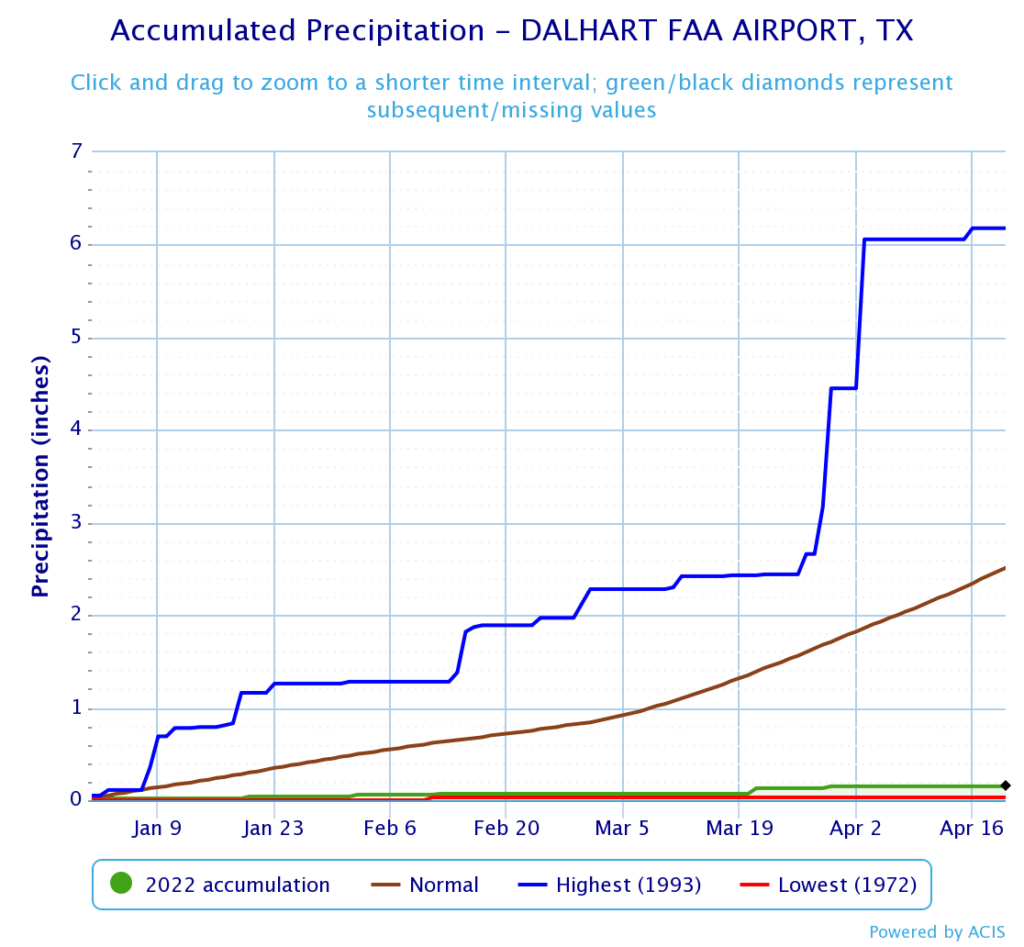
This heatmap is ten years old, but still relevant to frame the argument:

We are already seeing that crop insurance is going to be a huge factor this year in making farmers somewhat whole again, much like we saw in 2011. Current history has been consistent, future climate is less predictable. Climate change has been here, the extremes only recently felt. Irrigation helps, but we can only irrigate up to 80% of what a corn crop needs, the rest has to fall from the sky.
Unfortunately, the ENSO cold phase does not seem to be waning, even into the summer. It has been reported as of this month, that the ENSO phase is not collapsing, rather stabilizing which could complicate Winter 2022/2023. A third La Nina phase, while not unheard of, is rare, only happening twice since 1950 per NOAA.
The most significant piece to take away from the NOAA blog post by the climate scientists is this:
If the models hold, a third year would exacerbate an already deeply troubling circumstance for North America. An inch or two a month is a welcome relief, but will not make up reservoir deficits any time soon, and aquifers will not have a chance to even slightly recover. A rough road may be ahead.
